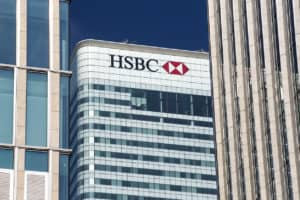 HSBC has launched a platform in a bid to create a digital ecosystem that enables clients to access post-trade services and solutions from the bank and other third-party service providers.
HSBC has launched a platform in a bid to create a digital ecosystem that enables clients to access post-trade services and solutions from the bank and other third-party service providers.
Named HSBC MarketSpace, the new setup will allow clients to choose and connect to their preferred service providers, with the ability to select products and services best suited to their needs.
HSBC said the platform will remove the need to establish and maintain a complex network of bilateral relationships throughout the post-trade value chain.
The open architecture approach will allow partners to develop services directly on the platform, presenting a new distribution channel to bring post-trade solutions to life more quickly.
Third parties will be able to leverage HSBC’s technologies and data “to create and monetise ideas in a rapid and cost-effective manner”, the bank said in a statement.
“With the launch of HSBC MarketSpace, we have reimagined the post-trade landscape and created an innovative, digital ecosystem,” Stephen Pemberton, global head of product management, direct custody & clearing, markets & securities services at HSBC.
“Capitalising on our unique strengths, we’ve built a single-entry platform that allows our clients to access the best post-trade services available from HSBC and others. We lower the cost of experimentation, enabling rapid innovation and commercialisation.”
The HSBC move follows two industry trends, firstly in custodians increasingly using an open architecture approach as their business models evolve, and secondly, being open to working with third-party providers such as data vendors and FinTechs to enrich their offering.
The move comes just over a year after HSBC decided to integrate its securities services and markets businesses into one platform. The combination of the two divisions also resulted in a restructuring of certain business lines, with derivatives clearing moving into securities services, and the creation of a securities financing division that would include equity prime financing, rates and credit repo activities and collateral treasury.